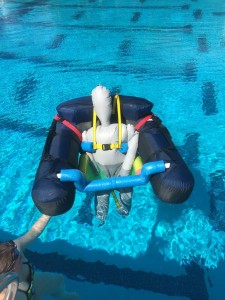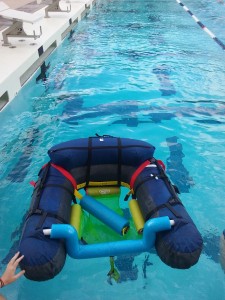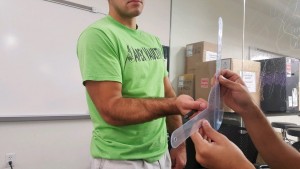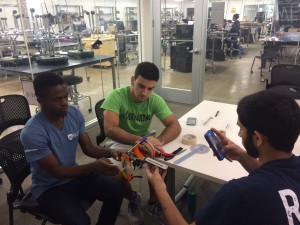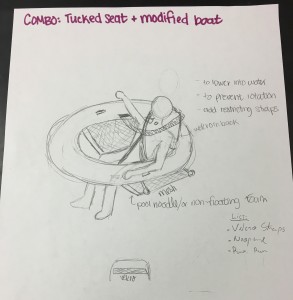This is the last week of the Summer Experience in Engineering Design internship. We had two major goals for the week: test with the actual user to analyze the success or failure of our device, and give a final presentation showing both what we’ve been doing this summer and the results of our project.
On Tuesday we went to the user’s house to test with him. As a team we generally refer to him as the user to respect his privacy. For the same reasons I won’t post any images or videos of the user in the device. That being said, both the family and the user had really positive responses to our final device. We had several design criteria that we wanted to look at: comfort, ease of use and of course safety. The family commented that the device was very comfortable and really liked how easy to use it was. Compared to the last device, our final device had less straps and was much easier to get the user in the device.
When testing, the device passed a safety criteria at first, but after about 10 minutes the device became more unsafe. What was happening was that the user tended to arch his back, causing him to slide forward in the seat. Most users sit a lot more vertically, so the size of the mesh seat encases their underside, providing a very secure seat. However since the user was arching his back, the seat ended up being too much material and allowed the user to be a lot more flat on the water than we had wanted. While this is a position we had anticipated for, we had been anticipating a different motion as a primary motion. Since we had no contact with either the family or the user prior, we were satisfied with the results.
Since then we have also given a presentation regarding our findings and talked about what the steps moving forward might be. The device has at least one, possibly more, iterations left to have a completely successful device. We have ideas on how to accomplish this, but not enough time to complete the changes before the internship ends. Additionally, before the project is handed off to the family, Rice will do a formal review to ensure the safety of the user. This review will take time and have many iterations before the device can be considered finished and ready to hand off to the family.
I just wanted to take this last moment to mention how much fun I had at this internship. I loved getting to know all these fantastic people, especially the ones from all around the globe. Shout out to my fantastic team of Allie and Rafael. I’m going to miss everyone, but am ready to come back in the fall and continue working on projects.

